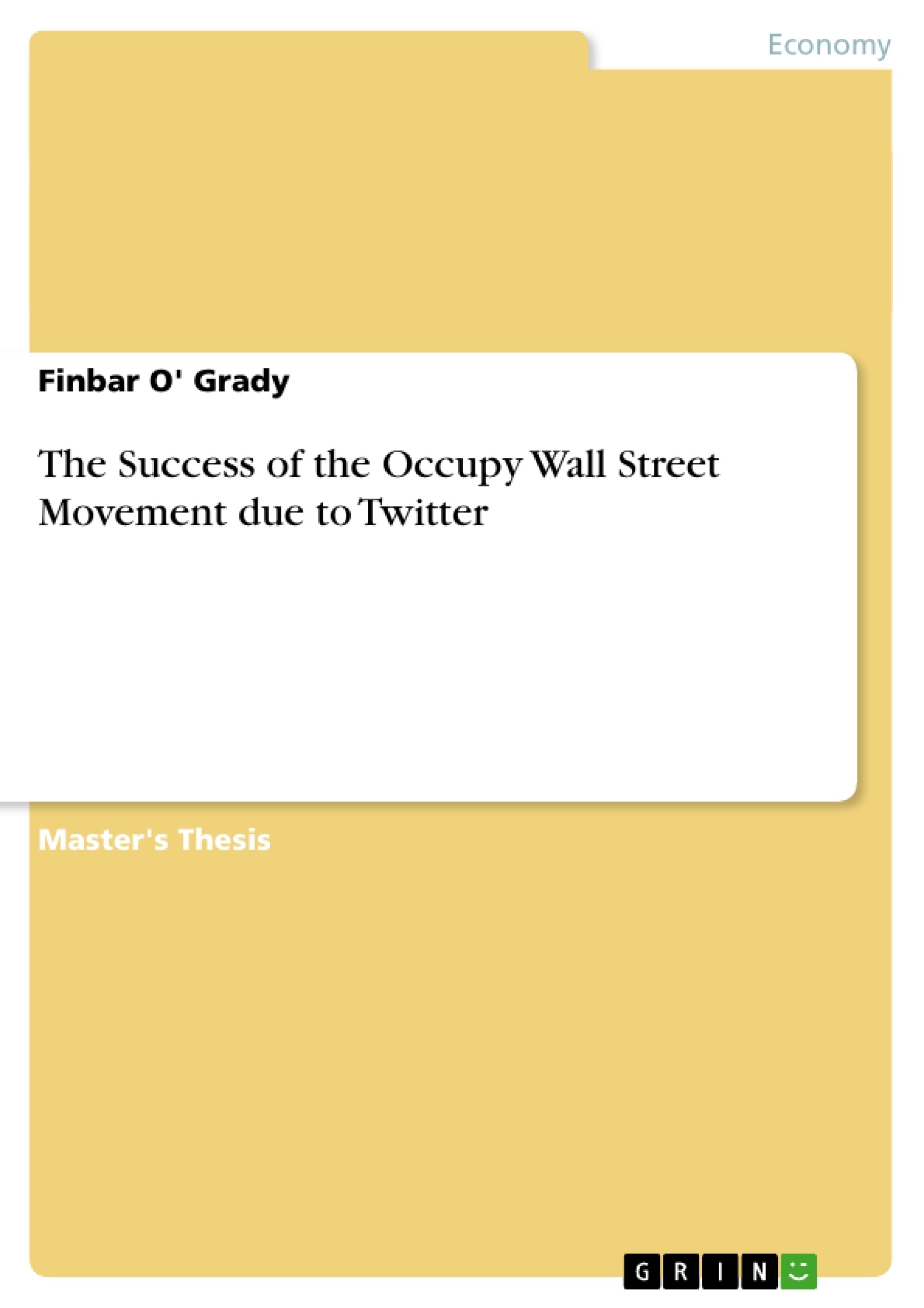The “Occupy Movement” is an international protest movement driven by people’s discontent with social and economic inequality. This paper is based primarily on Mark Earls book 'Herd', particularly his research regarding how “All mass behavior is a result of interacting individuals within a specific context” (Herd 2009 p.147). It will examine social media’s ability to magnify how word of mouth can influence mass behavior also considering Seth Godin book “Tribes” in this context and the increased speed at which this can happen due to social media (Godin 2008). The paper discusses how the Occupy Movement was partly inspired by the Arab Spring uprisings which had already demonstrated the power that social media can have on mass behavior throughout 2011. “We use Facebook to schedule the protests, Twitter to coordinate, and youtube to tell the world” was exclaimed by a Cairo activist to convey how they were leveraging social media to their advantage during the riots in Egypt (Casilli & Tubaro 2011). Social media refers to the use of both web-based and mobile technologies to allow people to communicate with each other and build relationships. Micro blogging sites such Twitter fall under the large scope of social media, as do social networking sites such as Facebook. Since the advent of Smartphones, people have access to social media sites at all times. People often look to Twitter for news first as updates about current events often appear on Twitter before they appear on major news outlets, The paper will discuss both the advantages of disadvantages of how social media can be utilized by the people involved in protests or riots by comparing the Cronulla riots of 2005 against the London riots of 2011 when social media was much more accessible and common place. The paper will also look at how the Occupy Movement spread across the world very quickly and discuss Occupy Wall Street’s future from the view point of it being a brand. It will conclude by showing that the Occupy Movement can attribute its growth and participation to social media’s effect on mass behavior, and in particular why Twitter is largely responsible for its success.
Inhaltsverzeichnis (Table of Contents)
- Abstract
- Keywords
- Acknowledgements
- Introduction
- The Occupy Movement
- The Arab Spring Influence
- Motivations behind Occupy Wall Street
- The Spread of the Occupy Movement
- Social media
- Introduction to Social Media
- Smartphones
- Twitters Influence on the Occupy Movement
- What is Twitter?
- Raising Awareness of the Occupy Movement
- Organisation of the Protests
- Sending Updates during the Protests
- Consumer Decision Journey
- Mass behavior
- Word of Mouth
- The Influencers
- The Down Sides to Social Medias Influence on Mass Behavior
- Cronulla Riots
- London Riots
- Has the Occupy Wall Street movement been successful?
- The Future for Occupy Wall Street
Zielsetzung und Themenschwerpunkte (Objectives and Key Themes)
This paper examines the role of social media, specifically Twitter, in the success of the Occupy Wall Street movement. It draws on theories of mass behavior and social influence, analyzing how word of mouth and the actions of influencers can be amplified by digital platforms. The paper uses the Arab Spring as a point of comparison, highlighting the similar strategies employed in both movements. Furthermore, it explores the advantages and disadvantages of social media's influence on mass behavior, considering both positive and negative outcomes in the context of protests and riots.
- Social media's impact on mass behavior
- The role of Twitter in raising awareness, organizing, and providing news updates
- The Occupy Wall Street movement as a brand
- The relationship between social media and the spread of protests and riots
- The potential challenges posed by the "filter bubble" for future social movements
Zusammenfassung der Kapitel (Chapter Summaries)
The paper begins by introducing the Occupy Wall Street movement and its goals. It then explores the influence of the Arab Spring, highlighting the role of social media in those uprisings. The following chapters delve into the use of Facebook, smartphones, and Twitter in mobilizing the Occupy movement, detailing how these platforms were utilized for communication, organization, and spreading awareness. The author analyzes the Occupy Wall Street movement as a brand, applying the "consumer decision journey" framework to demonstrate its online engagement strategy. Subsequent chapters examine the concept of "word of mouth" and the role of influencers in shaping mass behavior, highlighting how social media amplifies these dynamics. The paper concludes by discussing the future of the Occupy movement, acknowledging potential challenges like the "filter bubble" while highlighting the positive possibilities of social media for social change.
Schlüsselwörter (Keywords)
This paper focuses on the intersection of social media, mass behavior, and social movements. Key themes include the use of Twitter, Facebook, and smartphones to mobilize and amplify the Occupy Wall Street movement. It also examines the impact of "word of mouth" and the role of social influencers in shaping collective action. The paper explores the potential of social media to both facilitate positive social change and contribute to the spread of civil unrest.
- Quote paper
- Finbar O' Grady (Author), 2012, The Success of the Occupy Wall Street Movement due to Twitter, Munich, GRIN Verlag, https://www.grin.com/document/229553




